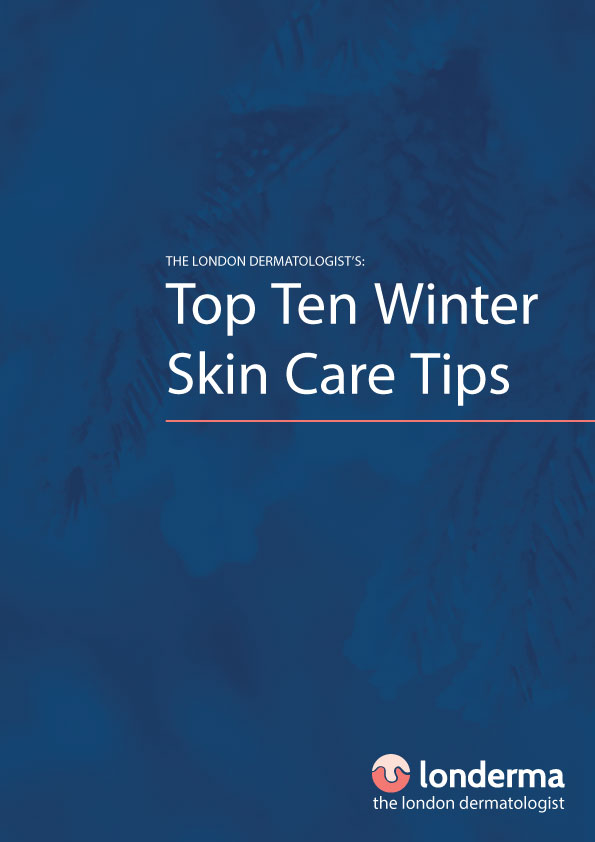Video consultations now available

It’s biting cold in the UK at the moment. That kind of clear blue sky, ice on the windows finger-numbing dry cold. Really beautiful, but tricky if you have rosacea. Temperature changes, from cold to warm to cold again, can upset the body’s control of skin blood flow. If you have rosacea it’s like having a dodgy boiler and the skin can flush uncontrollably, and even painfully when it warms.
I recently gave to the leading dermatology experts in the UK at the Annual Dermatology Consultants’ Course. Now that I’m installed in a café, flat-white in hand, I thought I would try to percolate the very latest rosacea research for my followers.
We have two types of immune systems, innate and acquired. The acquired immune system is the clever one. It is controlled and maintained by immune cells and not only recognises foreign things like bacteria, but also learns. So, if you’ve had an infection like a cold virus or measles, you won’t get that strain again because your acquired immune system has learnt about the bug. If it meets it again, it will squash it straight away.
The innate immune system is different and we’ve only recently learnt about it. It’s present in many cells, including the skin. When it sees something it doesn’t like, such as bacteria or a skin mite, it goes off — like a burglar alarm — causing inflammation. And in the skin this causes redness, swelling, inflammation, pain, and even increased blood vessel growth. Sound familiar?
We now know that in rosacea, parts of the innate immune system — specifically Toll-like receptor 2 and a protein called cathelicidin — are way too active. This causes immune cells to be pulled in and the skin to become inflamed. Why does this happen? It’s likely that some people just have genetically more overactive skin immune systems, but sun-damage and a skin mite called Demodex also probably play a role. The bad news is that this then seems to activate the acquired immune system as well, giving a double inflammation hit in rosacea sufferers.
The skin is full of blood vessels that supply it with nutrients and allow it to thrive and survive. But these blood vessels are not just static pipes. They’re an incredibly complicated series of different-sized tubes and valves which are under constant control by the brain, by nerves in the skin and by inflammatory chemicals released by skin and immune cells. When we get hot, we flush to cool, when we get embarrassed, angry or aroused we flush to communicate. If you have rosacea the flushing can be all over the place. But why?
We know that the ‘signaling chemicals’ that tell blood vessels to widen (called neuropeptides) are increased in rosacea skin. We also know that signaling receptors on nerves that respond to things like heat, and cause nerves to fire, are also increased. It is very very complex; pituitary adenyl cyclase releasing peptide, vasoactive intestinal peptide, adrenomedullin, calcitonin gene related-peptide, substance P and transient receptor potential cation channels are all up… We are still working on what this all means, but these are huge strides forward in our knowledge.
We are all covered in skin mites. Little critters called Demodex. These cylindrical, sausage-shaped animals with tiny legs at the top end, sit in our hair follicles and only come out at night to mate. Yikes! That’s right, we are covered in horny invertebrates. But what do they have to do with rosacea?
Dermatologists have argued about this for decades, but we now know that people with rosacea have more Demodex. In-fact people with papulopustular rosacea have almost six times as much as people without the condition. We also know that these bugs can stimulate the innate immune system that is overactive in rosacea, and that treatments that reduce Demodex help rosacea sufferers. So is Demodex important in rosacea? I think so.
It’s been about 18 months since topical Ivermectin became available in the UK for rosacea and I have to say I have been incredibly impressed. There are not many treatments that patients use superlatives (like ‘amazing’, ‘unbelievable’, ‘fantastic’) to describe, but this is one.
For the sake of openness and probity I would like to disclose that I have previously acted as a paid lecturer for the pharmaceutical company that makes the stuff. But this is my honest opinion.
Ivermectin works in two ways, it kills Demodex, by interfering with its nervous system, so that levels of Demodex are just about undetectable after seven days. But it also is anti-inflammatory and acts like a fire extinguisher, damping down and putting out the over stimulation of the innate immune system.
The clinical effects are a substantial and rapid reduction in inflammatory papules and pustules. This is confirmed by published clinical studies, and backed up by clinical experience. I have had several patients whose symptoms have previously only been controlled on long-term oral antibiotics. They have now been able to stop these and use Ivermectin instead.
My second favourite topical treatment in rosacea is azelaic acid, which reduces levels of the inflammatory chemicals that we know are increased in the skin of rosacea patients. It can cause stinging, but most patients don’t have problems and can use it regularly. In my experience it is more effective than metronidazole, which still seems to be the go-to topical treatment for rosacea for many doctors (but not me). I almost never use metronidazole, because I think there are better topical options.
Ivermectin and azelaic acid are great topical options for inflammation (the spots of papulopustular rosacea) but will not treat stable background redness and flushing. Dermatologists the world over were very excited when topical brimonidine became available about three years ago. It’s the first licensed treatment for the redness of rosacea.
Topical brimonidine works by powerfully reducing the surface blood flow to the skin. It does this quickly, often within half an hour, and keeps the skin pale for up to twelve hours. The clinical effect is dramatic.
Unfortunately, the treatment does not suit everybody and it is difficult to ‘…know what you’re gonna get’. Some people find that when the treatment wears off they can develop a flush that can be similar or worse that their normal rosacea. The latest research suggests that about a quarter of people who use brimonidine find it very helpful and continue to use it. Another quarter quite like it, but about half do not like the effect. It’s a case of trying it and seeing what happens for many people.
Laser and intense pulsed light are great treatments for facial redness, if they are done by someone qualified and experienced.
If you are really concerned about rosacea, you should probably see a dermatologist. Dermatologists are the only fully-trained, licensed and expert skin specialists. There are plenty of clinicians and non-clinicians who claim to be skin specialists or even dermatologists, but if you want to check whether someone actually is a UK-certified dermatologist, ask them whether they are on the UK Dermatology Specialist Register. Or go to the General Medical Council website www.gmc-uk.org and check your doctor’s registration status to see whether or not it says they are on the Dermatology Specialist Register.
 eBook Download: Top Ten Winter Skin Care Tips
eBook Download: Top Ten Winter Skin Care Tips